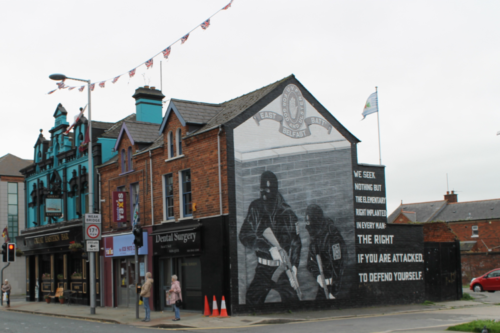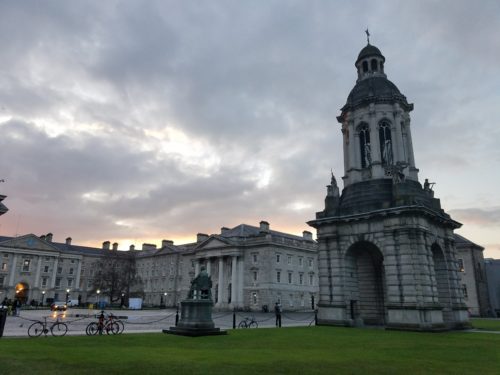I have often told an anecdote about the first time I heard the words ‘conflict resolution.’ I was in the process of separating from the military after nearly six years, attending a transition course that would fall woefully short of equipping me for the civilian world. Surrounded by young tough Marines, we were given lessons in the basics: the college application, veteran benefits, making a budget. It was during the tutorial on résumé writing that our instructor, without a hint of sarcasm, explained that we should list conflict resolution as a resume bullet. We laughed at ourselves, trading real bullets for resume bullets, not giving a second thought to the irony behind the idea of resolving conflict with bullets. Today marks the fifth anniversary of this story’s origin, and, as I write this final blog post and approach the completion of my master’s degree in conflict resolution, it seems an appropriate entry point into a conversation about what Northern Ireland has taught me about the future of resolving conflicts.
My introduction to the idea of conflict resolution came from a world in which conflicts were ‘solved’ by violence, speed, and intensity. Tactical combat is a zero-sum game, which we won by maneuvering elements to subdue a threat before they could subdue us. As we were the bearers of force, did that logic not also make us the resolvers of conflict? Wasn’t that what our nine-month deployment to Afghanistan was all about?
Five years after my time in the military ended, I still find myself searching for examples of a successfully resolved conflict. Studying conflict resolution in Belfast, I’ve spent the last year looking to the resolution of The Troubles in Northern Ireland for answers. As my studies progressed, this case contradicted what I was taught in the military; focusing on the tactical logic of winning battles, rather than the strategies that would remove the causes to fight. I found that conflicts are rarely resolved with the timeliness and simplicity of the tactical level. Learning about The Troubles has not given me all the answers; this case study is anything but complete. The reality is a tenuous peace, struggling to deal with its past and prevented from realizing its future because of a collapsed government, political mistrust, and a divided society. Although it maintains a veneer of stability, as our program scratched the surface with conversations amongst victims and prisoners, terrorists and freedom fighters, we learned that the problems of a post-conflict society are incredibly complicated and often have no easy solutions. However, this time in Belfast has illustrated that the nature of conflict is fundamentally changing and underscores the necessity that conflict resolution adapt accordingly.

Conflicts have evolved in step with modernity. In a world convoluted by globalization, they no longer tend to follow the old styles of ‘state on state’ wars over ideology or colonial conquest. Instead, we’re faced with conflicts of identity, where compromise is akin to sacrificing your cultural values and betraying your people. These new conflicts are deep and messy, relying on non-state actors, multinational coalitions, international orders, a global economy, and insurgencies – all with competing interests. In this context, peace processes often get a mixed review with expectations demanding they address every individual problem for each actor. But when it takes decades or centuries for divisions to metastasize into a conflict, perhaps it’s unreasonable to assume that root causes can be resolved within anything less than a similar timeline.
The great paradox of our time is that the more technology we invent, the more educated we are, the more diverse our opinions become. The most important lesson I’ve taken from this year has been that different groups of people need to find creative ways to live alongside each other, together, instead of clustering around a singular ethnic identity. This process can only begin when the violence ends and the combatants do so voluntarily. Otherwise, the only other way to resolve a conflict is to annihilate those who hold an opposing worldview, a dubious prospect given the growing plurality and our reluctance to commit crimes against humanity.
In 2018, there is no shortage of conflicts to resolve in the world, and after 17 years of continuous war waged by the United States, maybe it’s time to acknowledge that most conflicts can no longer be resolved with bullets.

